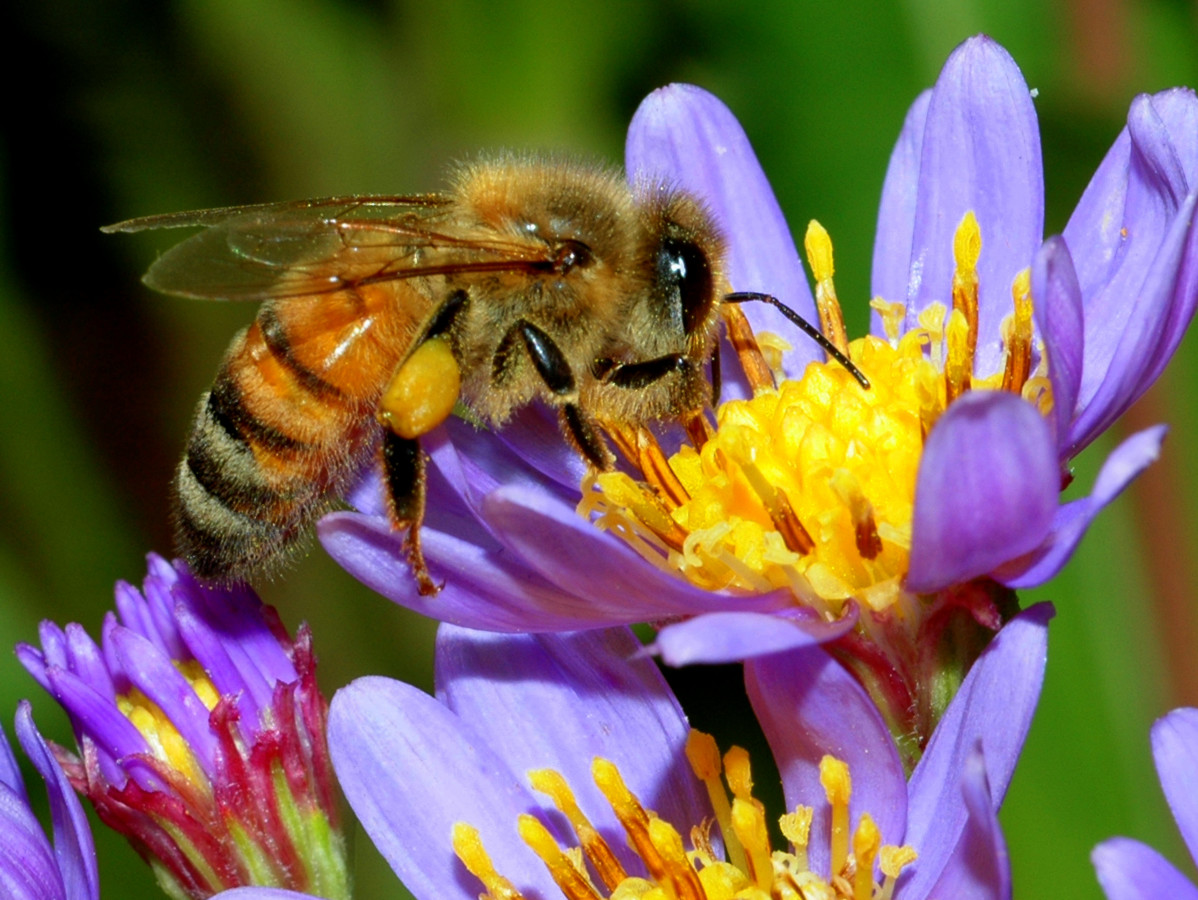In 2006, American beekeepers began noticing that their charges were mysteriously disappearing from one hive after another.
The losses didn’t stop the next year, or the next, and although the catastrophic declines have recently abated a bit, no one knows why the bees are dying or how to save them. Experts have warned that colony collapse disorder (CCD), as the phenomenon has been dubbed, could imperil our food production systems: a full one-third of the agricultural crops in the U. S. are pollinated by bees.
The little insect that shoulders most of this responsibility is the European honey bee (Apis mellifera). This relatively sleek, orange-and-black-striped, highly social animal is what we usually think of as a “bee,” and it produces the fragrant honeys and beeswax found in our markets. Like most Americans, the European honey bee is a naturalized species, having arrived on this continent with the first European colonists.
Humans have lived side-by-side with honey bees for a very long time and have bred them for certain desirable characteristics. However, a bee can never be entirely domesticated. The apiarist can encourage his bees to stay in a man-made hive, but there is nothing to prevent them from swarming, the process by which a colony splits in two; if swarming bees are not coaxed into a new hive, they will find another cavity––a hollow tree, an empty barn––in which to nest. In addition, the close proximity of domesticated and feral bee populations means that there is always some gene flow back and forth. There are over a hundred native bee species in the Finger Lakes, but they do not live in large colonies or produce significant amounts of either honey or wax.
Exotic species can have disruptive or even devastating impacts on native ecosystems, but honey bees do not seem to negatively affect native pollinators; if anything, the presence of so many additional bees has increased the reproductive capacities of many plants. Plants fiercely compete for attention by producing colorful, nectar-filled flowers; their success, however, is always limited by the number of pollinators available to take the bait. Although small fields surrounded by natural areas may be serviced entirely by native insects, modern large-scale farming often involves growing vast fields of single-species crops in landscapes that cannot support large populations of wild pollinators. Consequently, hives are trucked around the country on a regular schedule in order to pollinate crops as they come into bloom.
The hard-working, peripatetic insects that ensure our food supply are particularly susceptible to the recent bee plague. CCD seems to be caused not by a single factor but by a perfect storm of stressors that weaken a colony past the tipping point: fungal, bacterial, and viral pathogens; pesticides; stresses associated with migratory beekeeping; malnutrition (a particular problem for bees that feed on monocultures); and parasites. In particular, the Asian mite Varroa destructor is very often associated with colony collapse. Because beekeepers control mite infestations, bees never get a chance to evolve resistance to the parasites. In addition, colonies are crowded into apiaries, combs and broods are regularly transferred between colonies, and bees are discouraged from swarming, all of which favor the spread of mites.
If Varroa mites have wreaked havoc on beekeepers’ hives, they have had an even more devastating effect on feral honey bees: some experts estimate that there are almost no wild-living colonies left in the U.S. However, in at least one place in New York, feral bees are doing surprisingly well. In Cornell’s Arnot Forest, Schuyler County, the bees are going about their business as they have for the last four hundred years. In fact, the forest contains at least as many feral honey bee nests today as it did thirty years ago, despite the fact that the bees are as heavily infested with mites as are their hive-dwelling cousins. The reasons for their success are still unclear. The bees may have developed biological resistance or behaviors that reduce mite populations, such as more frequent grooming. Perhaps the mites’ strategies have evolved, as well, and they are learning to live more peacefully with their hosts. Then, too, perhaps swarming acts as a natural sort of mite control: feral bees are free to swarm whenever they please, and each swarm reduces the mite population in the original colony. Much more research remains to be done on this subject, but it is comforting to realize that at least part of the solution to the bee die-off that threatens our national agricultural security just might be found in the wild spaces of upstate New York.


